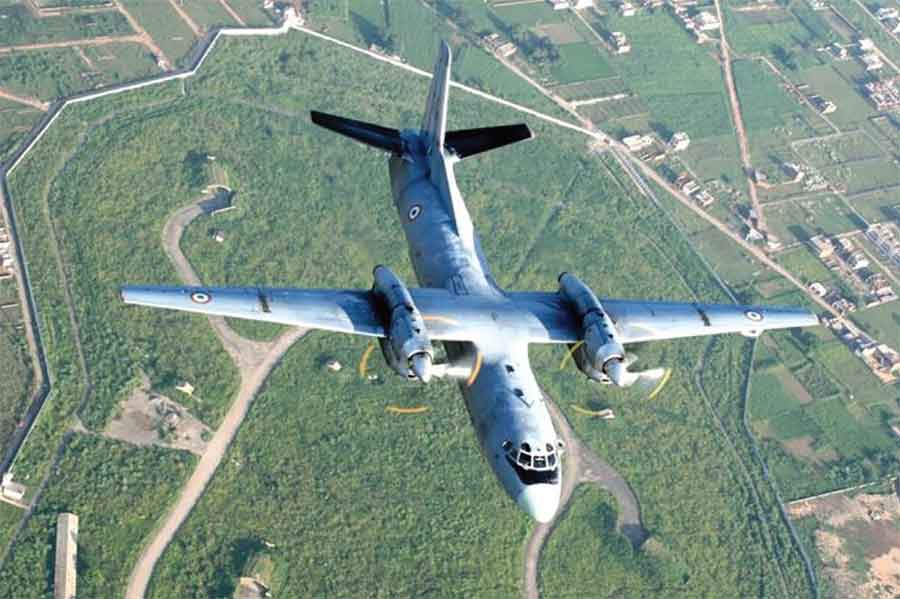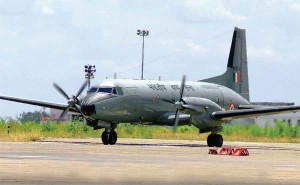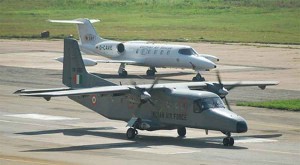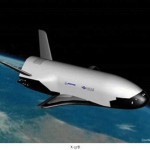Although it is certainly important to have an indigenous aerospace production base, a monopoly (as HAL has enjoyed so far) is not conducive to efficiency. Some private sector competition might help HAL to shape up, as state-owned Air India is doing after the entry of private airlines. However, if no foreign entity is willing to enter the Indian defence market by tying up with Indian industry, the Avro replacement process needs to go ahead in any case by purchasing a suitable tactical transport aircraft off the shelf. The IAF’s requirement is urgent and cannot be delayed much longer lest safety issues begin to emerge with the ageing Avro fleet.
The Avros are by far the worst off, as they are fast approaching the half-century service mark…
The Indian Air Force (IAF) is in the throes of an exciting transformation into a strategic air force. Armed with the latest aerospace technology it will gradually be able to extend its vigilance, reach and power. Although fighter aircraft rightly dominate the process, transport aircraft are no less important, and the IAF is striving to greatly boost its airlift capability by the end of the Twelfth Plan (2017). Once again, though strategic airlifters regularly make the headlines, tactical transport aircraft are equally necessary. One of the important requirements of air power is that it should offer a range of options – tactical as well as strategic. This applies also to the transport fleet, where a balanced structure is imperative. The question therefore arises – is the IAF transport fleet balanced?
Delayed Action
The recent enhancements of the IAF’s airlift capability have come after a gap of almost 30 years. It was in the mid-1980s that the transport fleet witnessed a flurry of activity as the government at last recognised that the IAF needed to be better equipped to meet its numerous responsibilities. First, the Dakota and Packet fleets were replaced by 110 Antonov An-32 twin-turboprop medium-tactical transport aircraft, from 1984 onwards. Then, 17 four-engine Ilyushin IL-76MD jets were acquired in place of the An-12 turboprops, commencing 1985. The giant 43-tonne payload IL-76 was the IAF’s first true strategic airlifter and made a dramatic difference to its transport fleet. Finally, in 1988, Dornier Do-228 light transport aircraft were inducted to replace the Otter and Devon aircraft for communication, liaison and training duties. All these aircraft are still flying today, as is a large fleet of HS 748M Avro medium transport aircraft.
The twin-turboprop Avros with a payload capacity of 5.1 tonnes were acquired from Britain’s Hawker Siddeley from 1964 onwards and later produced under licence by HAL. About 56 remain in service, employed primarily for communication and medium lift tasks. The IAF’s current predicament stems mainly from the urgent need to replace the ageing Avro fleet.
Fleet replacement is a hugely expensive process. Since most of the current transport aircraft were inducted over a short period, practically the entire fleet is falling due for replacement, at a cost the nation can ill afford. The IAF’s transformation plan therefore has three key components – “preserve and maintain”, “upgrade and improve” and “replace and acquire”.
Overall, the strategic end of the airlift spectrum looks reasonably healthy.
Today, less than half the IL-76 jets can be operationally employed but they will be preserved and kept in service for some more years, perhaps with the help of an upgrade. The An-32s are already undergoing a mid-life upgrade in Ukraine, under a $400-million contract signed in 2009. The programme that will run till March 2017 includes overhaul and re-equipment of 40 aircraft in Ukraine at the rate of ten aircraft annually. The refurbishment of the airframe as well as improved avionics will help increase the service life of the fleet to 40 years i.e. at least till 2025.
The cockpit layout is being modernised, noise and vibration reduced and crew comfort, reliability and maintainability enhanced. The payload capacity is also being increased from 6.7 tonnes to 7.5 tonnes. The balance 64 aircraft will be upgraded at the IAF’s No 1 Base Repair Depot at Kanpur. The Dorniers are in reasonably good shape and these too can be preserved to meet the IAF’s requirements till around 2025. The Avros are by far the worst off, as they are fast approaching the half-century service mark. And being of vintage technology, they need to be replaced by modern tactical transport aircraft as soon as possible.
Strategic Surge
In recent years the IAF’s strategic airlift capability has seen a significant surge. The process began in 2008 with a $1.2 billion contract for six Lockheed Martin C-130J Super Hercules four-engine turboprop aircraft. These planes are already in operational service and have proved their worth in natural calamities. The C-130J with a maximum payload capacity of 19 tonnes, or 92 fully equipped troops, is today the world’s most widely used military transport aircraft. The IAF’s C-130Js are customised for Special Operations, for which the service lacked a dedicated platform thus far. They can undertake deployment of Special Forces in all-weather conditions, even in complete darkness. They can also be employed for tasks such as airborne assault, air transported operations, air supply, air maintenance and disaster relief. Another six aircraft have been cleared for induction and these are expected to be based at Panagarh, West Bengal. The total of twelve aircraft should be adequate to meet the IAF’s Special Operations requirements and augment its heavy lift capability if required.
The truly exciting enhancement of strategic airlift was the $4.1 billion deal concluded in 2011 for the purchase of ten Boeing C-17 Globemaster III four-engine jets. The first few of these iconic aircraft have already been formally inducted into the newly-formed 81 Skylord Squadron, based at Air Force Station Hindon, and all ten are due in by the end of 2014. With a payload capacity of 74.8 tonnes, well above the 43-tonne load of the IL-76, and a range of 2,400 nautical miles without refuelling, the C-17 aircraft is a true game-changer for the IAF. Another six C-17s may also be inducted, although the window of opportunity to do so is closing since Boeing has already announced plans to shut down its long-running production line in 2015. If the Indian government does take a timely decision to enhance the strength of the IAF’s fleet to 16, half the number is expected to be based at Panagarh. These 16 C-17 planes should be adequate to meet the IAF’s strategic airlift needs for some years, particularly since they will be backed up by the remaining IL-76 aircraft.
In September 2010, Hindustan Aeronautics Limited (HAL) also signed a joint venture agreement with United Aircraft Corporation (UAC) of Russia to co-develop a twin-jet Multi-role Transport Aircraft (MTA) as replacement for the An-32. The aircraft is intended to have a cruise speed of 430 knots, a range of up to 1,460 nautical miles and a payload capacity of about 18.5 tonnes. The high wing, rear loading MTA will have features such as fly-by-wire, full authority digital engine control, modern avionics and a glass cockpit. Although the MTA is classified as a tactical transport aircraft it may also be employed in some strategic roles. It is expected to fly for the first time in 2017 and enter production both in Russia and India in 2019. The IAF plans to order 45 aircraft initially and a follow-up order is possible.








Sirjee thoda sa Air Force, navy ke tareh dhakka lagana bhi toh suru karen..iss desh mein proposals sirf bana kar dene se kuch nahin hota sir, dhakka de ke age badhana padta hai…fb par iss se zyada kuch likhna theek nahin hoga.
That’s the irony both Navy and Air Force are mordernising as if India’s the next super power; strategic levels but then the army which has to do the dirty job on the ground does not have modern rifles to talk a few. Ironic that Air Force was ineffective in 62 ops and also Kargil one shudders are we going the 62 way again by ceating organisations that have little relevance in our domestic need time for ppl to wake up and ensure that growth is even
Is Indian Army on board on these strategic and tactical transporter. After all it is the Army who has to do the job after getting transported!
Close Air Support is a big issue. Not surprisingly IAF does not even use the word CAS, they use some other fancy words like counter surface force operations , Look at US , what is happening when they thought of abandoning A10 WARTHOGS. Also see the number of aircrafts US Navy or US Army have.
Developing a tactical transport aircraft is well within our capability.
A good progression from the NWFP days of 1930 when they were purely an extended artillery. But, now the CAS (Close air support ) arena has a major void. A-10 of USA being mothballed. Need to get them for CAS.
Well the article sounds like the review of a transport company which talks in terms of haulage and tonnage. The real issue is that has the Air Force worked on what is the requirement of the Army in terms of operational issues. Sadly the two ends; the Army and the Air force don’t meet on these issues. The Air Force runs its own agenda with its own mind set of what military operational requirements are. With 12 C-130 and 16 C-17s will they be able to drop an Airborne Battalion. No the reason is that to drop a battalion you need heavy drop capabilities and allied equipment. There are other factors that need to be considered are the Parachutes and the Army’s requirement of heavy drop equipment. Even when the Air Force had 120 AN-32s they couldn’t make enough aircraft available to drop a full scale Battalion which required about 50 + An 32’s. Remember India has a Parachute Brigade which is fully geared or Airborne Operations and the only drawback is that the Air Force doesn’t have Aircraft to drop a Battalion on full scale. So therefore let’s not create an inventory list with having different kinds of aircraft. The idea is to deliver what the Army wants and not what the Air Force thinks. Imagine an Airborne stream of C 130’s C17’s and AN32’s . The technicalities involved. The whole issue of having strategic lift capabilities and Airborne Operational capabilities needs a deeper understanding.